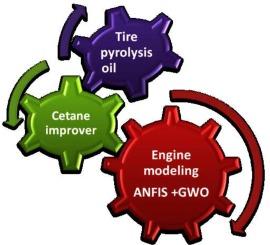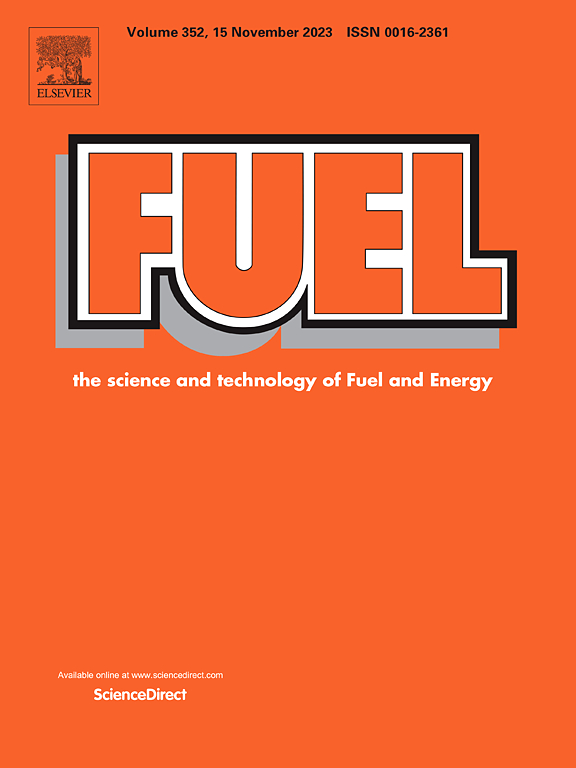Neuro fuzzy-grey wolf optimization-based modelling and analysis of diesel engine using tire oil with different proportions of 2-EHN
IF 7.5
1区 工程技术
Q2 ENERGY & FUELS
引用次数: 0
Abstract
Globally, billions of automotive tires are discarded each year. However, managing their disposal is challenging. One of the options involves the pyrolysis of discarded tires to generate tire pyrolysis oil, as engine fuel. This study investigates the incorporation of 2-EHN into two distinct desulfurized TPO blends with advanced injection timing as a solution to counter the low cetane number of TPO. It examines three distinct concentrations of 2-EHN i.e. 0.15 %, 0.30 %, and 0.45 %, in TPO blends of 20 % and 40 %. The findings indicate the incorporation of 2-EHN into TPO led up to 9.8 % enhancement in thermal efficiency and 15 % reduction in ignition delay. Additionally, it resulted in reduced smoke and NOx by up to 29 % and 19 %, respectively, although a slight rise in HC and CO emissions was observed. However, further investigations into the engine’s behavior are constrained by the complexities involved, time limitations, and restrictions on experimental costs. To overcome these constraints, novel empirical models have been devised by integrating the Adaptive Neuro-Fuzzy Inference System (ANFIS) with the grey wolf optimization (GWO) technique. The R, R2 values were near one, and low values of MAPE, MSE, and RMSE demonstrated strong alignment with the experimental findings.

基于神经模糊灰狼优化的2-EHN不同配比轮胎油柴油机建模与分析
在全球范围内,每年有数十亿个汽车轮胎被丢弃。然而,管理它们的处置是具有挑战性的。其中一种方法是对废弃轮胎进行热解,生成轮胎热解油,作为发动机燃料。本研究研究了将2-EHN加入到两种不同脱硫TPO共混物中,并提前喷射时间作为解决TPO十六烷值低的解决方案。它检查了三种不同浓度的2-EHN,即0.15%,0.30%和0.45%,在20%和40%的TPO混合物中。结果表明,在TPO中加入2-EHN可使热效率提高9.8%,点火延迟降低15%。此外,它导致烟雾和氮氧化物分别减少了29%和19%,尽管观察到HC和CO的排放量略有增加。然而,对发动机性能的进一步研究受到所涉及的复杂性、时间限制和实验成本的限制。为了克服这些限制,将自适应神经模糊推理系统(ANFIS)与灰狼优化(GWO)技术相结合,设计了新的经验模型。R、R2值接近1,MAPE、MSE和RMSE的低值与实验结果吻合较好。
本文章由计算机程序翻译,如有差异,请以英文原文为准。
求助全文
约1分钟内获得全文
求助全文
来源期刊

Fuel
工程技术-工程:化工
CiteScore
12.80
自引率
20.30%
发文量
3506
审稿时长
64 days
期刊介绍:
The exploration of energy sources remains a critical matter of study. For the past nine decades, fuel has consistently held the forefront in primary research efforts within the field of energy science. This area of investigation encompasses a wide range of subjects, with a particular emphasis on emerging concerns like environmental factors and pollution.
 求助内容:
求助内容: 应助结果提醒方式:
应助结果提醒方式:


